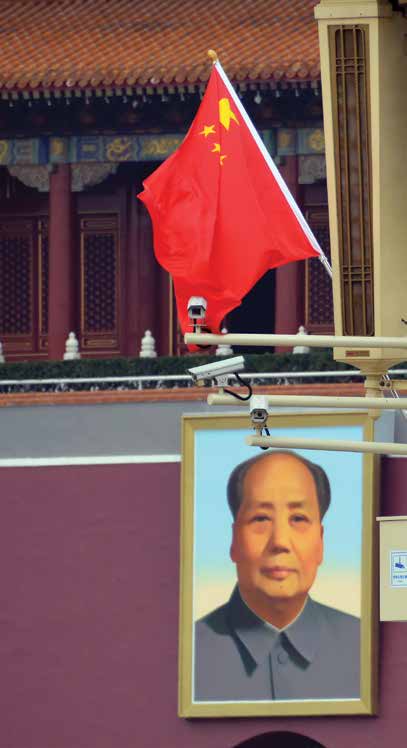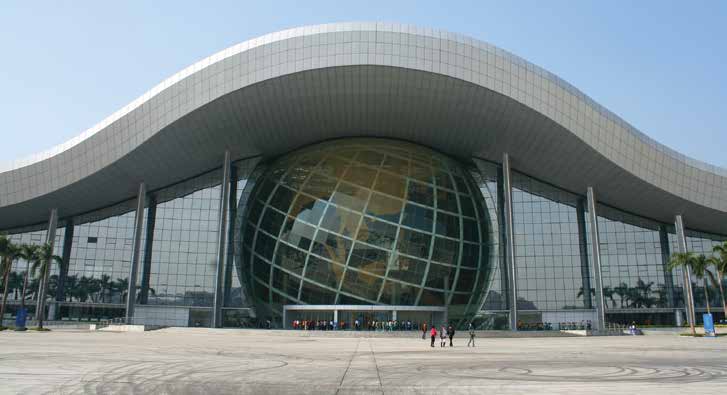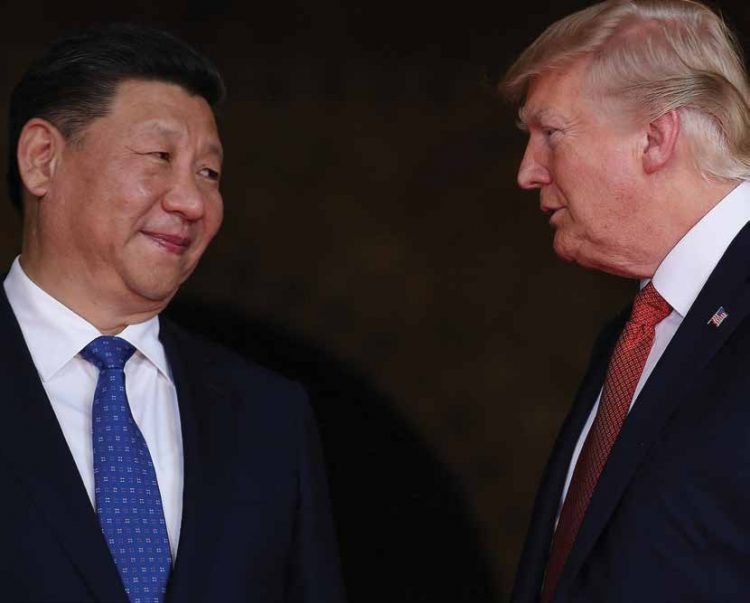In his latest column for Inside Asian Gaming, Dr Peter T Treadway explores the rise of Chinese technology and its long-term implications
Professor, author and financial advisor, Dr Peter T Treadway is currently principal of Historical Analytics LLC, a consulting firm with an investment approach based on his Wall Street experience as economist, strategist and securities analyst.
In 1914 the Europeans (including the British) ruled the world. Their empires spanned the globe, their culture reigned supreme, financially they were the center of the world, their science was a marvel and they had convinced themselves and a good part of the world that they possessed a moral superiority. But by 1945, they had massacred tens of millions of their citizens, bombed their beautiful cities into rubble and bankrupted themselves financially and morally. German, the emerging language of technology in 1914, disappeared from the pages of global science.
How did such a catastrophe happen? Simply put, Britain, France and Russia could not abide the rise of an aggressive Germany and unwittingly opted to destroy their entire European civilization. Only the entry of the United States – fortuitously a clone-offspring of democratic Britain – prevented total annihilation.
Nobody wants 1914-1945 to happen again.
History repeats
The United States – today still the world’s global hegemon and policeman – faces the rise of a new and much larger global rival, the People’s Republic of China. The United States is going to have to adjust to the reality that in the coming decades it is highly likely (though not quite inevitable) that China will usurp the US’ number one role in the world. If China does enough things right, there is little the US can do to stop the Chinese ascent. America’s only “hope” is that China will not do enough things right.
China is obsessed with technology, getting rich and reclaiming its historical role in the world. Through initiatives such as the Made in China 2025 program, China has clearly indicated that its principle objective for its economy is to become number one in technology. Technology will raise the living standards of the Chinese people and ensure the position of China in the world. Make no mistake. The big US/China differences in the future won’t be about steel or territorial disputes. They will be about technology. The China worriers in the US will seek to halt the progress in Chinese tech.
In my opinion, the US can slow the Chinese technological advance with trade wars and petty bans on Chinese investment and the like, but it cannot stop it. Moreover, such policies would be disruptive to the US and Chinese economies alike.
The conundrum: Civilian uses – not military – are driving new technology
In the past, there was a clear division between military and civilian technology. The military could develop its own technology in secret for things like nuclear bombs, laser-guided bombs or stealth fighters. The US could keep China or anybody else from acquiring this technology. But today, new technology is being driven by civilian rather than military uses. The civilian sector gets things first. There are no secrets. Just patents.
Therein lies the problem for those who would try to cut off the technology flows from the US to China. Today it is computer games, autonomous vehicles, virtual and augmented reality, genomics, AI, robotics, drones, the cloud, blockchain – the list goes on – that is driving new technology. These are all global non-military industries. Listen to any top tech company’s earnings call and the conversation always covers how the company is doing in global markets including China. Gamers are more important than generals in the explosion of global tech! Nvidia for example was driven to improve its GPU (Graphic Processing) chips by the insatiable demands of gamers, not the Pentagon. The GPU later became indispensable in AI and autonomous cars and now data mining for bitcoin. The Pentagon probably didn’t know any of this was coming even though now it may wish it had.
To be fair, there is DARPA, the Defense Advanced Research Project Agency. DARPA has played a role in developing robotic and autonomous car technology. But the primary tech drivers have been civilian. The Chinese and American companies are working on this. Cut the flow of technology and consumers everywhere will lose.

A recent report sponsored by the Department of Defense lamented that so much of civilian technology has dual military-civilian uses. The report, written by Michael Brown and Pavneet Singh, has the governmentalese super-long title of China’s Technology Transfer Strategy: How Chinese Investments in Emerging Technology Enable a Strategic Competitor to Access the Crown Jewels of US Innovation. The report takes particular issue with Chinese investments in US start-ups, viewing these investments as a national defense problem. The report may have a point.
But if implemented it would smother US innovation and ensure there were no new crown jewels. Technology today is being driven globally by markets, not the US government. It is being driven by nerdy teenagers playing computer games, by busy women who want Amazon’s Alexa to do their chores and select and deliver their clothes and their meals and by aging fogies who need help driving their cars. The military adds nothing to this new civilian knowledge economy. Yes, these civilian technologies may have huge military uses. But cut off the civilian side and there will be nothing for the militaries.
Cutting off the flow of technology to China will prove futile
The Chinese tech rise will be unstoppable unless the Chinese government follows really restrictive and stupid policies. It all starts with education. The Chinese can’t get enough. The reality is that so-called STEM subjects (science, technology, engineering, math) are a major focus of Chinese education. In 2016, according to the World Economic Forum, 4.7 million Chinese students graduated in STEM subjects versus 568,000 in the United States. Some might take issue regarding quality but Alphabet Executive Chairman Eric Schmidt, who should know, has been quoted as saying about Chinese STEM graduates,
“If you have any kind of concern that somehow their system is not going to produce the kind of people that I’m talking about (qualified scientists), you’re wrong.” Interestingly, two Chinese institutions, the Chinese Academy of Sciences and Tsinghua University, placed in the top 10 on the Nikkei list for most quoted AI-related research papers over 2012-2016. (Microsoft was first).
The government report mentioned above states that one quarter of US STEM graduate students are Chinese foreign nationals who then are not allowed to stay in the US to work after graduation. This reflects a big flaw in American immigration policy as the report somewhat surprisingly admits.
The one quarter number apparently leaves out Indian foreign students and Asian American students who also are reported to be big in the STEM subject area. Is it that some groups are better at math and science or is there some other reason? This is one politically charged subject that needs taking on but not in this column.
I will just cite inadequacies in the American educational process and the eagerness of the Chinese to learn. One might ask – where are the American STEM students? Ban the Chinese (and Indian) nationals and some graduate schools would probably close. It is unlikely the foreign students would be replaced by Americans. You can’t win with nobody. America’s educational problems lie with America, not China.
Another problem for those who would cut off the flow of tech to China, China will prove a magnet for engineers and scientists in surrounding countries with a similar culture. There won’t be any stopping this flow. The Middle Kingdom (China) has been the center of East Asian intellectual life for millennia. Japan, Taiwan and South Korea are loaded with engineers and tech talent. So long as Xi Jinping doesn’t pull down an iron isolationist curtain around China, many of these talented professionals will migrate to seek their fortune in the Middle Kingdom. They already have.
And America may have a hard time bullying other countries to cut tech to China. For example, Taiwan Semiconductor just announced it was considering building a 3nm chip fab (chip factory) in China. Without getting into the technical “weeds”, this is a very big deal and very state of the art. True, Taiwan Semi will control the fab and the technology but still…
Regarding its military, America should worry about its internal enemies as much as China. The biggest of those enemies are Social Security, Medicaid and Medicare. In the coming years, entitlements have the potential to eat the military’s lunch. All this when America is constantly at war in so many countries around the world.

The Chinese Academy of Sciences placed in the top 10 on the Nikkei list for most quoted AI-related research papers from 2012 to 2016.
So what about Japan – America’s high tech ally?
Japan has been America’s ally, under the American nuclear umbrella since WWII.
Japan may be part of America’s strategy for maintaining superiority over China. But in an odd way it may serve as a model for the China worriers. Although there has been some revival lately in the Japanese economy, Japan has been in a stall mode since 1990. In technology, the country has combined a high level of sophistication with a lack of innovation. For example, in the list of quotable papers cited above only six Japanese institutions managed to place in the top 500 with only one in the top 100. Nineteen Japanese institutions placed in the 500 a decade ago.
The Japanese model was going to take over the world in 1990. Somehow, it didn’t.
So how does this help American hegemony? For those who want America to stay on top it offers some hope. The hope is that China, with the same demographic aging problems as Japan, with the same protectionist top down economy and with the same culture that for millennia selected genes for intelligence cum Confucian obedience, will suffer the same stall.
This isn’t my primary forecast. But it is a lower probability alternative. Meanwhile, Japan remains a potential source for technological transfer to China.
So what is an investor to do?
Technology is accelerating at an accelerating rate partly because it has become a global phenomenon. I believe any efforts by Trump or Xi to render the tech world asunder will ultimately fail. They both would wind up hurting their own consumer driven economies.
And who knows? The Americans could be surprised. Chinese firms, like the Shenzhen drone firm DJI, may come to the United States and bring new tech with them. The tech flow may be in the other direction.
The big Chinese tech firms like Alibaba and Tencent are trying to expand out of China, particularly in Southeast Asia and India. Just in time to compete with Amazon and Google. Baidu, the Chinese Google, is devoting new resources to AI and autonomous cars.
Investors who share my view that China constitutes an exciting tech market should own some Chinese tech stocks, recognizing that there are special geopolitical and domestic political risks and that China’s glorious 5,000 year history does not include a respect for property rights.




























